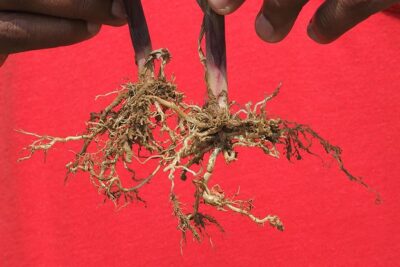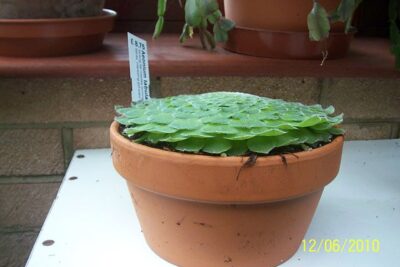
Can Succulent Leaves Grow Roots When Planted in Soil?

When it comes to gardening and plant propagation, succulents have gained significant popularity in recent years. Known for their ability to store water in their leaves, succulents are hardy plants that can thrive in various environments. One common question that arises among succulent enthusiasts is whether the leaves of these plants can grow roots when planted in soil. Understanding the process of succulent leaf propagation and the factors that influence root growth can provide valuable insight into the care and cultivation of these unique plants.
We will explore the fascinating world of succulent leaf propagation and delve into the question of whether succulent leaves can grow roots when planted in soil. We will discuss the anatomy and physiology of succulent leaves, the process of leaf propagation, and the conditions necessary for successful root growth. Additionally, we will highlight some common mistakes to avoid and provide helpful tips for maximizing root development in succulent leaves. Whether you are a seasoned succulent enthusiast or just starting your succulent journey, this article will equip you with the knowledge and tools to successfully propagate and grow succulents from leaves.
- Yes, succulent leaves can grow roots when planted in soil
- Planting succulent leaves in soil can encourage root growth
- Soil provides the necessary nutrients and support for succulent leaves to develop roots
- When succulent leaves are planted in soil, they can form a new plant through root growth
- If properly cared for, succulent leaves will take root and grow into new plants in the soil
- Soil acts as a medium for succulent leaves to establish a root system and grow
- Planting succulent leaves in soil is a common method for propagating new succulent plants
- Succulent leaves have the ability to sprout roots when given the opportunity to grow in soil
- By planting succulent leaves in soil, you can encourage the growth of new roots and eventually new plants
- Frequently Asked Questions
Yes, succulent leaves can grow roots when planted in soil
Many succulent enthusiasts are always on the lookout for new ways to propagate their beloved plants. One popular method is to grow roots from succulent leaves by planting them directly in soil. This technique has been proven to be successful for many succulent varieties, making it a great option for those looking to expand their collection.
How does it work?
When a succulent leaf is detached from the plant, it still retains some of the nutrients and moisture it needs to survive. By planting the leaf in soil, it provides the necessary conditions for the leaf to develop roots and eventually grow into a new plant.
Step-by-step process:
1. Choose a healthy succulent leaf: Select a mature leaf from your succulent plant that is plump and undamaged.
2. Let the leaf callous over: Place the leaf in a dry and well-ventilated area for a few days until the cut end forms a callous. This step is crucial to prevent rotting.
 Can Succulent Leaves Regrow Once they Fall Off?
Can Succulent Leaves Regrow Once they Fall Off?3. Prepare the soil: Use a well-draining succulent potting mix or create your own by combining equal parts of regular potting soil, perlite, and coarse sand.
4. Plant the leaf: Gently press the calloused end of the leaf into the soil, burying it about a quarter to a half of its length. Ensure the leaf is upright and stable in the soil.
5. Provide the right conditions: Place the potted leaf in a bright location with indirect sunlight. Avoid direct sunlight as it can scorch the leaf. Water sparingly, allowing the soil to dry out between each watering.
6. Wait patiently: It may take several weeks to several months for roots to develop from the leaf. Be patient and resist the temptation to overwater during this period.
7. Transplant the new plant: Once roots have formed and a new rosette or plantlet emerges from the base of the leaf, you can carefully remove the leaf and transplant the new plant into its own pot.
Important tips:
- Not all succulent leaves will successfully grow roots when planted in soil. Some varieties are more prone to propagation through leaf cuttings than others.
- Avoid overwatering the planted leaf as it can lead to rotting. Succulents prefer dry conditions.
- Ensure the succulent leaf receives adequate sunlight, but protect it from intense sunlight that can damage or burn the leaf.
- Be patient and give the leaf enough time to develop roots before expecting significant growth.
By following these steps and tips, you can successfully grow roots from succulent leaves planted in soil. It's an exciting and rewarding way to expand your succulent collection while enjoying the process of propagation.
Planting succulent leaves in soil can encourage root growth
 Succulent Pruning: Master the Art of Stem Cutting with Expert Tips
Succulent Pruning: Master the Art of Stem Cutting with Expert TipsWhen it comes to propagating succulents, one popular method is by planting their leaves in soil. This technique has gained popularity among succulent enthusiasts as it can encourage root growth and eventually lead to the development of new plants.
While succulents are known for their ability to store water in their leaves, they also have the amazing capability to grow roots from these leaves when planted in soil. This process, known as leaf propagation, can be a rewarding and exciting way to expand your succulent collection.
How to plant succulent leaves in soil
Planting succulent leaves in soil is a relatively simple process. Here's a step-by-step guide to help you get started:
- Select healthy leaves: Choose mature leaves that are plump and free from any signs of damage or disease. This will give you the best chance of successful propagation.
- Gently remove the leaves: Carefully twist or cut the leaves from the stem of the parent plant. Ensure that the leaf is intact and has a clean break.
- Allow the leaves to dry: Place the leaves in a shaded area and allow them to dry for a few days. This step is crucial as it allows the cut end of the leaf to callous over, which helps prevent rotting once planted in soil.
- Prepare the soil: Choose a well-draining soil mix specifically formulated for succulents. Avoid using regular potting soil, as it can retain too much moisture and lead to root rot.
- Plant the leaves: Gently press the calloused end of the leaf into the soil, ensuring that it makes good contact. You can plant multiple leaves in the same pot or separate them into individual containers.
- Provide proper care: Place the planted leaves in a bright, indirect light location. Water sparingly, allowing the soil to dry out between waterings. Overwatering can hinder root growth and increase the risk of rot.
- Be patient: Root growth from succulent leaves can take several weeks to months. Be patient and resist the urge to disturb the leaves during this time. Eventually, you will start to see tiny roots emerging from the cut end of the leaf.
Benefits of planting succulent leaves in soil
Planting succulent leaves in soil offers several benefits:
- Cost-effective propagation: Leaf propagation is an affordable way to expand your succulent collection. Instead of purchasing new plants, you can grow multiple plants from a single leaf.
- Increased success rate: Planting succulent leaves in soil provides a stable environment for root growth. This method has a higher success rate compared to other propagation techniques, such as water propagation.
- Creates new plants: By planting succulent leaves in soil, you can create new plants that are genetically identical to the parent plant. This allows you to maintain desirable traits and characteristics in your succulent collection.
So, the next time you find a healthy succulent leaf that has fallen off or you decide to prune your succulent, consider planting the leaves in soil to encourage root growth. It's a simple and rewarding technique that can help you expand your succulent collection and enjoy the beauty of these fascinating plants.
Soil provides the necessary nutrients and support for succulent leaves to develop roots
When it comes to propagating succulents, one of the most popular methods is by using leaf cuttings. But can succulent leaves grow roots when planted in soil? The answer is a resounding yes! In fact, soil provides the necessary nutrients and support for succulent leaves to develop roots and eventually grow into new plants.
 Succulent Resilience: Regrowth After Cutting or Damage
Succulent Resilience: Regrowth After Cutting or DamageWhen you carefully remove a leaf from a healthy succulent plant, it contains all the genetic material needed to produce a new plant. By planting the leaf in soil, you are providing it with a suitable environment to initiate root growth.
Before planting the leaf, it is important to let it dry for a few days. This allows the cut end to callus over, which helps prevent rot and disease. Once the leaf has callused, you can gently place it on top of well-draining soil.
It is essential to use a well-draining soil mix specifically formulated for succulents. This type of soil allows excess moisture to escape, preventing the roots from becoming waterlogged and rotting. A mix of equal parts of potting soil and perlite or pumice is often recommended.
Steps to plant succulent leaves in soil:
- Prepare the leaf: Carefully remove a healthy leaf from the parent plant, making sure to include the entire leaf without damaging it.
- Allow the leaf to callus: Place the leaf in a dry and shaded area for a few days until the cut end forms a callus. This step is crucial to prevent rotting.
- Select a suitable pot: Choose a small pot with drainage holes to plant the leaf in. This will ensure proper drainage and prevent waterlogged soil.
- Fill the pot with well-draining soil mix: Create a suitable environment for root growth by filling the pot with a well-draining soil mix, specifically formulated for succulents.
- Plant the leaf: Gently place the callused end of the leaf on top of the soil, making sure it is in contact with the soil surface.
- Water sparingly: After planting, water the leaf sparingly. Succulents prefer dry conditions, so it is important not to overwater and risk rotting the leaf.
- Provide indirect light: Place the potted leaf in a location with bright, indirect light. Avoid direct sunlight, as it can cause sunburn and damage the leaf.
- Be patient: It may take several weeks or even months for roots to develop. During this time, avoid disturbing the leaf and maintain the appropriate care.
By following these steps and providing the right conditions, you can successfully plant succulent leaves in soil and watch them develop roots. Remember, patience is key, as the process may take some time. With proper care and attention, you will soon have new succulent plants to enjoy and share with others!
When succulent leaves are planted in soil, they can form a new plant through root growth
One of the fascinating aspects of succulent plants is their ability to propagate and grow new plants from their leaves. When a succulent leaf is planted in soil, it has the potential to develop roots and give rise to a brand new plant.
How do succulent leaves grow roots in soil?
When a succulent leaf is removed from the parent plant and placed in soil, it goes through a process called propagation. This process involves the leaf developing roots and eventually forming a new plant.
Initially, the leaf will start to callus over at the base. This callus is a protective layer that forms to prevent moisture loss and potential infections. Once the callus has formed, tiny roots will begin to emerge from the base of the leaf. These roots grow into the soil, allowing the leaf to establish a connection and absorb water and nutrients.
 Can You Propagate Succulents by Growing New Plants from Leaves?
Can You Propagate Succulents by Growing New Plants from Leaves?As the roots continue to grow, the leaf will start to wither and eventually fall off. By this point, the new plant will have formed its own rosette of leaves and will be able to sustain itself independently.
Factors affecting root growth in succulent leaves
While succulents are generally known for their ability to propagate from leaves, there are a few factors that can influence the success of root growth:
- Type of succulent: Different succulent species have varying levels of success when it comes to leaf propagation. Some species, such as Echeveria and Sedum, are known to root easily, while others may require more time and care.
- Leaf health: Healthy leaves with no signs of damage or disease have a higher chance of successfully rooting compared to damaged or diseased leaves.
- Environmental conditions: Succulent leaves require the right conditions to root successfully. Factors such as temperature, humidity, and light levels can all impact the rooting process.
Tips for successful root growth
If you're interested in propagating succulent leaves, here are some tips to increase the chances of successful root growth:
- Choose healthy leaves: Select leaves that are plump, firm, and free from any damage or signs of disease.
- Allow the leaf to callus: Before planting the leaf in soil, let it sit in a dry and shaded spot for a few days to allow a callus to form.
- Use well-draining soil: Succulents prefer soil that drains well to prevent excess moisture and root rot. A mix of cactus soil and perlite or pumice is recommended.
- Provide proper lighting: Place the leaf in a location where it can receive bright, indirect light to encourage root growth.
- Maintain the right moisture level: While succulents are drought-tolerant, they still require some moisture to root. Mist the soil lightly or water sparingly to keep it slightly damp, but not overly saturated.
By following these tips and providing the right care, you can increase the chances of success when planting succulent leaves in soil and witnessing the growth of new plants.
If properly cared for, succulent leaves will take root and grow into new plants in the soil
When it comes to propagating succulents, one of the most common methods is by using leaves. Many plant enthusiasts wonder if succulent leaves can grow roots when planted directly into the soil. The answer is a resounding yes! With the right care and conditions, succulent leaves have the remarkable ability to root and grow into new plants.
How does it work?
When a succulent leaf is planted in soil, it begins to develop roots from the cut or broken end. This process is known as leaf propagation. The leaf absorbs moisture from the soil, which triggers the growth of roots. Over time, these roots establish a strong connection with the soil, allowing the leaf to take in nutrients and water for growth.
 Propagating Succulents: A Guide to Using Aerial Roots for Growth
Propagating Succulents: A Guide to Using Aerial Roots for GrowthWhat are the key factors for success?
While succulent leaves have the potential to grow roots when planted in soil, there are a few key factors to consider for successful propagation:
- Healthy leaves: Choose plump, healthy leaves from a mature succulent plant. Leaves that are damaged or shriveled may not root successfully.
- Well-draining soil: Succulents thrive in well-draining soil. Use a specialized succulent or cactus mix that provides good drainage to prevent waterlogged roots.
- Proper watering: It's important to strike a balance when watering succulent leaves. Overwatering can lead to rot, while underwatering may cause the leaves to dry out. Water sparingly, allowing the soil to dry out between waterings.
- Indirect sunlight: Succulents prefer bright, indirect sunlight. Place the planted leaves in a location that receives adequate light, but avoid direct sun exposure, as it can cause sunburn.
- Patience: Leaf propagation takes time. It may take several weeks or even months for roots to develop and new plants to emerge. Be patient and provide the necessary care during this process.
What happens after rooting?
Once the succulent leaf has rooted and established a strong connection with the soil, it will begin to grow new leaves from the center or base. These new leaves will gradually develop into a rosette, resembling the parent plant. With proper care, the new succulent plant will continue to grow and thrive.
Leaf propagation is not only a fascinating process but also a great way to expand your succulent collection. By planting succulent leaves in soil and providing the essential care, you can create a flourishing garden of succulent plants.
Soil acts as a medium for succulent leaves to establish a root system and grow
When it comes to succulents, their ability to propagate from leaves is truly remarkable. One might wonder if these leaves can grow roots when planted directly into soil. The answer is a resounding yes!
Soil plays a crucial role in providing the necessary nutrients and support for succulent leaves to establish a root system and eventually grow into new plants. The process of rooting leaves in soil is known as leaf propagation, and it is a popular method among succulent enthusiasts.
The importance of using well-draining soil
Before planting succulent leaves in soil, it is important to ensure that the soil is well-draining. Succulents, by nature, prefer arid conditions and are adapted to survive in environments with minimal water availability. Using well-draining soil allows excess water to drain away quickly, preventing the roots from becoming waterlogged and susceptible to rot.
One effective way to create well-draining soil is by mixing regular potting soil with coarse materials such as perlite or pumice. These materials help to improve the aeration and drainage of the soil, creating an ideal environment for succulent roots to thrive.
 Water Propagation: A Guide for Succulent Plants
Water Propagation: A Guide for Succulent PlantsThe process of planting succulent leaves in soil
When planting succulent leaves in soil, it is important to follow a few simple steps to ensure successful root growth:
- Select healthy leaves: Choose leaves that are plump, firm, and free from any signs of damage or disease. This will increase the chances of successful propagation.
- Allow leaves to callus: Before planting, it is essential to let the cut end of the leaf dry and form a callus. This helps to prevent rotting and promotes the development of roots.
- Plant the leaves: Gently press the callused end of the leaf into the soil, ensuring that it makes good contact. The rest of the leaf should be left exposed above the soil surface.
- Place in a suitable location: Succulent leaves require bright, indirect light to grow roots. Choose a spot with sufficient light but avoid direct sunlight, as it can scorch the leaves.
- Water sparingly: While it is important to keep the soil slightly moist, overwatering can hinder root growth. Water the planted leaves sparingly, allowing the soil to dry out between waterings.
Patience is key
After planting succulent leaves in soil, it is crucial to exercise patience. Root growth can take several weeks to several months, depending on various factors such as the succulent species, environmental conditions, and care provided.
During this time, it is important to resist the temptation to tug or check for root growth. Handling the leaves too frequently can disrupt the rooting process and hinder their ability to establish a strong root system.
By providing the right conditions and patiently waiting, you can witness the transformation of succulent leaves into new plants. It is a rewarding experience that allows you to expand your succulent collection and share the beauty of these resilient plants with others.
Planting succulent leaves in soil is a common method for propagating new succulent plants
When it comes to propagating new succulent plants, one common method is planting succulent leaves in soil. This technique involves removing a healthy leaf from an existing succulent and placing it in a well-draining soil mix.
But the question arises: can succulent leaves actually grow roots when planted in soil? The answer is yes! Succulent leaves have the incredible ability to develop roots and eventually grow into new plants.
 Growing Succulent Seeds at Home: A Step-by-Step Guide
Growing Succulent Seeds at Home: A Step-by-Step GuideHow does it work?
When a succulent leaf is planted in soil, it goes through a process called propagation. This is the process of growing new plants from existing plant parts, such as leaves or stems.
Once the leaf is planted in soil, it starts to develop roots. These roots anchor the leaf in the soil and provide it with the necessary nutrients and water to survive and grow.
As the leaf continues to receive water and nutrients through its roots, it begins to form a new rosette of leaves at the base. This is known as a "pup" or "offset." Over time, this pup will grow into a new succulent plant, identical to its parent.
Conditions for success
While succulent leaves have the ability to grow roots when planted in soil, there are a few conditions that need to be met for successful propagation.
- Well-draining soil: Succulent leaves require a well-draining soil mix to prevent rotting. A mixture of potting soil, sand, and perlite is ideal.
- Indirect sunlight: Placing the planted leaves in an area with indirect sunlight is crucial. Direct sunlight can scorch the leaves and hinder root development.
- Minimal watering: Succulent leaves should be watered sparingly during propagation. Overwatering can lead to rotting and the failure of root formation.
- Patience: Propagating succulent leaves takes time. It can take several weeks or even months for roots to form and new growth to appear.
Planting succulent leaves in soil is an effective way to propagate new succulent plants. With the right conditions and a little patience, these leaves can develop roots and grow into beautiful new succulents. So if you have some healthy succulent leaves on hand, why not give it a try and see the magic of propagation unfold?
Succulent leaves have the ability to sprout roots when given the opportunity to grow in soil
Understanding Succulent Propagation
 How to Propagate a Rock Succulent by Splitting: Step-by-Step Guide
How to Propagate a Rock Succulent by Splitting: Step-by-Step GuideSucculents, with their fleshy, water-storing leaves, have gained tremendous popularity among plant enthusiasts. One of the fascinating aspects of these plants is their ability to propagate from leaves. This means that you can grow an entirely new succulent plant from just a single leaf! But can succulent leaves grow roots when planted in soil? The answer is a resounding yes!
The Process of Rooting Succulent Leaves
When a succulent leaf is planted in soil, it has the potential to develop roots and eventually grow into a new plant. This process, known as leaf propagation, involves a series of stages that are both intriguing and rewarding for succulent lovers.
- Leaf detachment: To start the propagation process, carefully remove a healthy leaf from the parent plant. Gently twist or cut the leaf from the stem, ensuring that a clean break is made.
- Callus formation: After removing the leaf, allow it to dry for a few days to form a callus. This callus acts as a protective layer, preventing the leaf from rotting when it is planted.
- Root development: Once the callus has formed, the leaf can be placed on well-draining soil. It is crucial to use a specialized succulent or cactus mix that provides excellent drainage. Over time, small roots will emerge from the base of the leaf, seeking moisture and nutrients in the soil.
- New growth: As the roots continue to develop, the leaf will start to produce new growth from the center. Tiny rosettes or baby plants, also known as "pups," will appear. These pups can be separated from the parent leaf and grown into independent succulent plants.
Tips for Successful Rooting
While succulents are generally hardy plants, there are a few key factors to consider for successful rooting:
 Can I Easily Propagate Succulents by Leaf Propagation?
Can I Easily Propagate Succulents by Leaf Propagation?- Healthy leaves: Choose leaves that are plump, without any signs of damage or disease.
- Proper watering: Avoid overwatering the planted leaf, as excessive moisture can lead to rotting. Water sparingly, allowing the soil to dry out between waterings.
- Indirect sunlight: Place the leaf in a bright location away from direct sunlight. Succulents prefer indirect light to prevent sunburn and ensure healthy growth.
- Patience: Rooting succulent leaves can take several weeks to months, so be patient and resist the urge to disturb the process. Monitor the leaf regularly for signs of root development and new growth.
By following these steps and providing the optimal conditions, you can enjoy the rewarding experience of watching a succulent leaf transform into a thriving plant. With a little time and care, you'll have a collection of beautiful succulents that started from just a single leaf!
By planting succulent leaves in soil, you can encourage the growth of new roots and eventually new plants
When it comes to propagating succulents, planting their leaves in soil is a common and effective method. This technique allows the leaves to develop new roots, which eventually gives rise to new plants. If you're wondering whether succulent leaves can grow roots when planted in soil, the answer is a resounding yes!
Succulents are well-known for their ability to propagate through various methods, including leaf propagation. This process involves taking a healthy leaf from a mature succulent and placing it on top of well-draining soil. Over time, the leaf will develop roots and eventually grow into a new plant.
How does it work?
When a succulent leaf is planted in soil, it goes through a process called callus formation. The base of the leaf, where it was attached to the stem, will begin to form a callus. This callus acts as a protective barrier, preventing any potential infections or diseases from entering the leaf.
Once the callus has formed, tiny roots will start to emerge from the base of the leaf. These roots will gradually grow longer and stronger, anchoring the leaf into the soil. As the roots continue to develop, they will absorb water and nutrients from the soil, providing sustenance to the leaf and promoting its growth.
In addition to the formation of roots, you may also notice the emergence of new leaves or offshoots from the base of the original leaf. This is a sign that the leaf is successfully developing into a new plant. With proper care and attention, these new plants can eventually grow into mature succulents.
Tips for successful root growth
- Choose healthy leaves: Select leaves that are plump, firm, and free from any signs of damage or disease.
- Use well-draining soil: Succulents thrive in soil that allows excess water to drain quickly. A mixture of potting soil and perlite or sand is ideal.
- Provide indirect sunlight: Place the planted leaves in a location where they can receive bright, indirect sunlight. Avoid direct sunlight, as it can scorch the leaves.
- Maintain proper moisture: While it's essential to keep the soil slightly moist, be careful not to overwater. Succulents prefer dry conditions, so allow the soil to dry out between watering sessions.
- Be patient: Root growth and the development of new plants take time. It may take several weeks or even months before you start noticing significant progress.
By following these tips and providing the necessary care, you can successfully encourage succulent leaves to grow roots when planted in soil. This method of propagation is not only rewarding but also a great way to expand your succulent collection.
 Water Propagation of Succulents: A Comprehensive Guide
Water Propagation of Succulents: A Comprehensive GuideFrequently Asked Questions
1. Can succulent leaves grow roots when planted in soil?
Yes, succulent leaves can grow roots when planted in soil. They have the ability to propagate through leaf cuttings.
If you want to read more articles similar to Can Succulent Leaves Grow Roots When Planted in Soil?, you can visit the Propagation category.






You Must Read